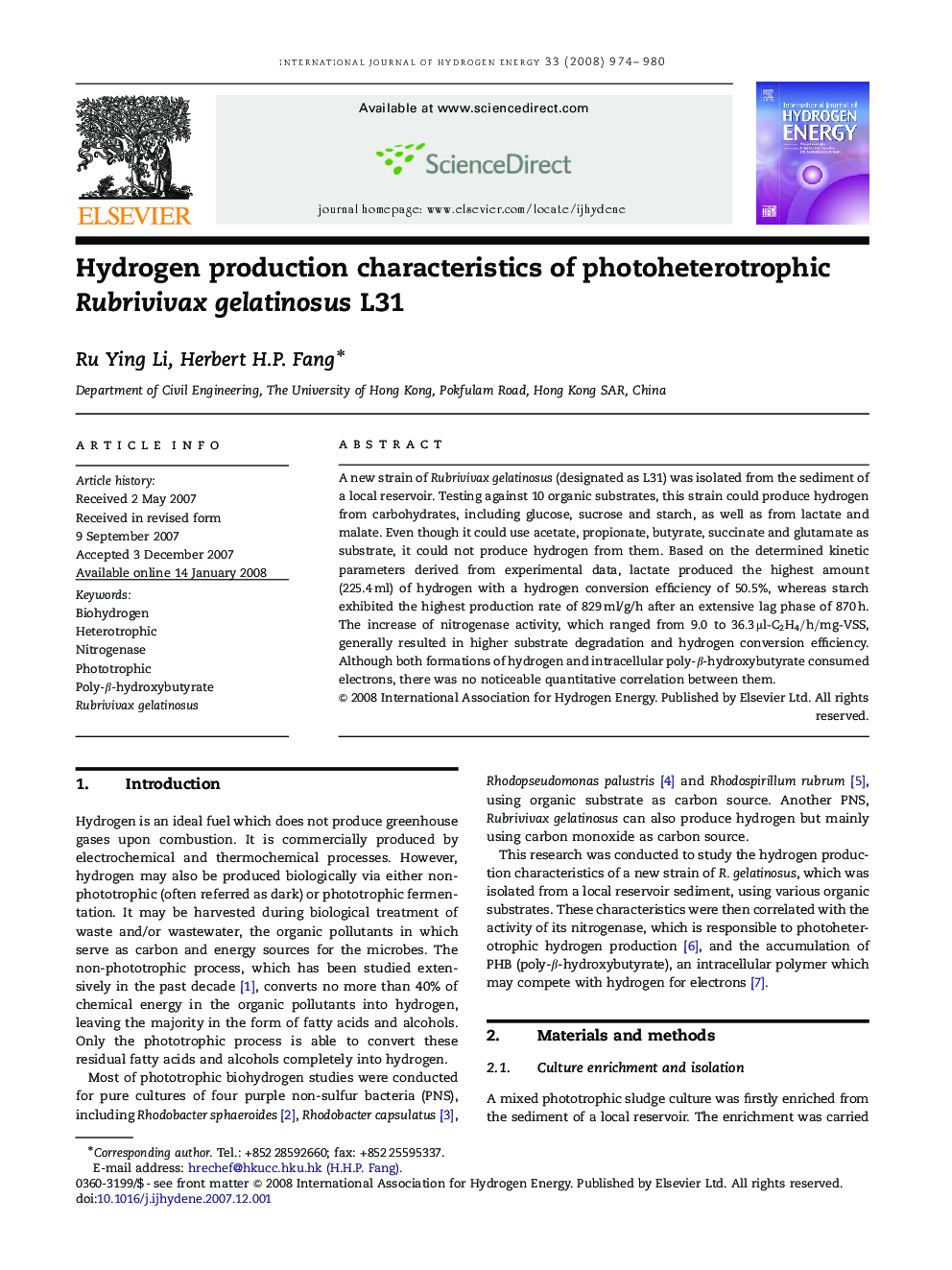| Article ID | Journal | Published Year | Pages | File Type |
|---|---|---|---|---|
| 1279241 | International Journal of Hydrogen Energy | 2008 | 7 Pages |
A new strain of Rubrivivax gelatinosus (designated as L31) was isolated from the sediment of a local reservoir. Testing against 10 organic substrates, this strain could produce hydrogen from carbohydrates, including glucose, sucrose and starch, as well as from lactate and malate. Even though it could use acetate, propionate, butyrate, succinate and glutamate as substrate, it could not produce hydrogen from them. Based on the determined kinetic parameters derived from experimental data, lactate produced the highest amount (225.4 ml) of hydrogen with a hydrogen conversion efficiency of 50.5%, whereas starch exhibited the highest production rate of 829 ml/g/h after an extensive lag phase of 870 h. The increase of nitrogenase activity, which ranged from 9.0 to 36.3μl-C2H4/h/mg-VSS, generally resulted in higher substrate degradation and hydrogen conversion efficiency. Although both formations of hydrogen and intracellular poly-ββ-hydroxybutyrate consumed electrons, there was no noticeable quantitative correlation between them.
